The Mercedes-Benz bionic car is a concept vehicle based on examples in nature, in which Daimler Chrysler has also transferred the diesel engine technology of the future to a fully functioning and practical car for everyday use.
Bionics – a combination of biology and technology – is a quite recent field of research which has nonetheless already made remarkable progress possible in different areas. Nature has provided ideas for high-strength materials, low-friction surfaces, dirt-repellent coatings and practical Velcro fastenings, for example.
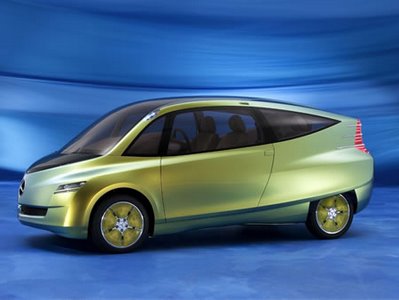

Many of these inventions are based on more or less accidental discoveries from the animal and plant world. For the first time in the case of the Mercedes-Benz bionic car, the engineers at the Mercedes-Benz Technology Center (MTC) and DaimlerChrysler Research looked for a specific example in nature whose shape and structure approximated to their ideas for an aerodynamic, safe, spacious and environmentally compatible car. In other words, this was not a matter of detailed solutions but of a complete transfer from nature to technology – a first.
This required teamwork: biologists, bionics scientists and automotive researchers from various disciplines embarked on an extraordinary expedition into the animal kingdom which soon led them into the depths of the underwater world – and presented them with a surprise. It was not the fast, sleek swimmers such as the shark or dolphin that came closest to the ideals of the research engineers, but a creature that looks anything but streamlined and agile at first sight: the boxfish.
It has its home in the coral reefs, lagoons and seaweed of the tropical seas, where it has a great deal in common with cars in many respects. It needs to conserve its strength and move with the least possible consumption of energy, which requires powerful muscles and a streamlined shape. It must withstand high pressures and protect its body during collisions, which requires a rigid outer skin. And it needs to move in confined spaces in its search for food, which requires good
maneuverability.
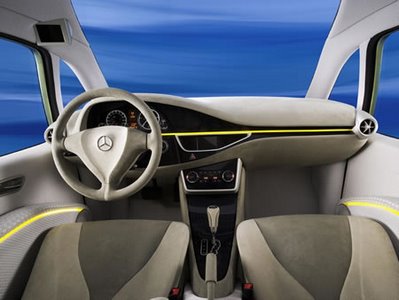
There is more to the boxfish than meets the eye: despite its angular body, it is an excellent swimmer whose cube-shaped structure is by no means a hindrance. On the contrary, the boxfish possesses unique characteristics and is a prime example of the ingenious inventions developed by nature over millions of years of evolution. The basic principle of this evolution is that nothing is superfluous and each part of the body has a purpose – and sometimes several at once.
The outer skin of the boxfish consists of numerous bony, hexagonal plates which are interlinked to form a rigid suit of armour. This bony, armor-plated structure gives the body of the fish great rigidity, protects it from injury and is also the secret of its outstanding maneuverability, as tiny vortices form along the edges on the upper and lower parts of the body to stabilize the fish in any position and ensure that it remains safely on course even in areas of great turbulence. It does not need to move its fins in the process, and can therefore conserve its strength.
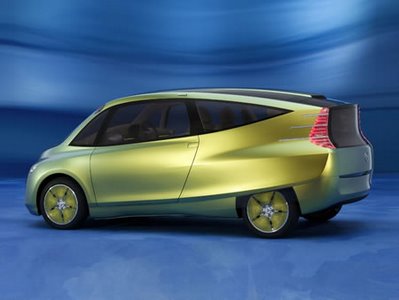
Applied to automotive engineering, the boxfish is therefore an ideal example of rigidity and aerodynamics. Moreover, its rectangular anatomy is practically identical to the cross-section of a car body. And so the boxfish became the model for a so far unique automotive development project.
Equipped with a 103 kW/140-hp direct-injection diesel engine, the concept car consumes 4.3 liters of fuel per 100 kilometers (combined), making it 20 percent more economical than a comparable standard-production model.
No 9. BMW Mille Miglia coupe
The Mille Miglia concept coupe from BMW was created to commemorate the BMW 328 touring coupe which won the 1,000 mile Mille Miglia race in 1940. In the process setting an as-yet unbroken record for the highest average speed, 166.7 km/h (103.5 mph).

The 2006 Mille Miglia concept coupe was never intended to race, but it did feature at the 2006 race where it was unveiled. Built to pay respect to the winning BMW 328 Touring coupe, its drivers, and the engineers who created it, the Mille Miglia concept coupe shares similar lines to the original car but translated into BMW's contemporary style.
Powered by the same drivetrain as the BMW Z4 M coupe, the Mille Miglia concept has thoroughly modern underpinnings. However the design process that created the concept were based on traditional methods. Using clay and plaster 3d models instead of computer generated images.

The bodywork of the Mille Miglia concept coupe is made from carbon-fibre reinforced plastic, and its classic flowing lines hide some of the interesting shapes found on the BMW Z4.
The asymmetrical LED taillight cuts down from the top of the rear window and curls under the rear of the coupe. BMW say that this unusual layout increases visibility for following vehicles, but in reality it would probably confuse many drivers. Interesting feature nonetheless.
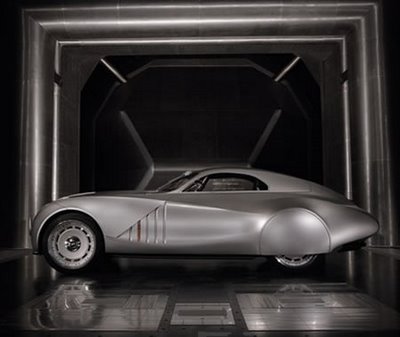
The 2006 BMW Mille Miglia concept coupe is longer, wider and slightly lower than the Z4 it is based on, but the 20 inch old-fashioned wheels are still quite prominent.
Entry to the Mille Miglia is via the rear-hinged canopy. The entire structure, windows and all, lifts up and allows the driver and passenger to climb in, where they are protected by an overhead X-frame roll cage.
No 8. GM Hy-wire
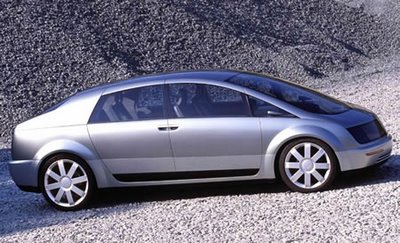
General Motors Hy-wire is the first drivable vehicle that combines a hydrogen fuel cell with by-wire technology. To show off this radically new architecture, the front and rear panels are made of transparent glass. Onlookers can see through the car from front to rear; the liberal use of glass and the absence of a hood also provide a greater visual command of the road for the driver. To reinforce this effect even the seat backs are open. There is no post between the front and rear doors, known as a B-pillar. Drivers and passengers have greatly enhanced legroom.

The X-drive, which allows steering, braking and other vehicle systems to be controlled electronically rather than mechanically, provides greater freedom for the driver. Drivers now have the option to brake and accelerate with either the right or left hand. The driver accelerates by gently twisting either the right or left hand grip, and brakes by squeezing the brake actuator also located on the hand grips. The hand grips glide up and down for steering, somewhat different than today's vehicles where the steering wheel revolves around a steering column.
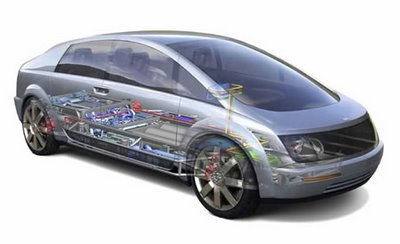
The fuel cell stack, which produces a continuously available power of 94 kilowatts, is installed in the back of the chassis. Most of the chassis is 11-inches thick, tapering to 7 inches at the edges. The electrical motor drives the front wheels and is installed transversely between them. Three cylindrical storage tanks (5,000 psi - pounds per square inch or 350 bars) are located centrally in the chassis.
No 7. Scion Fuse
The all-new Fuse was designed to be the new Scion sports coupe icon. Its goal was to push the limits of a coupe concept by combining entertainment, digital technology, and versatility into one sinister looking package. Most importantly, its styling makes a visual statement about its intention to expand the performance envelope among affordable, entry-level sport coupes.

The exterior of the Fuse was the conception of Calty designers Alex Shen and Bob Mochizuki, who were determined to create a strong performance statement. Inspiration came from the "HAKO" super GT racing cars of Japan, commonly known as the JGTC series. From the side, the Fuse has a low, aggressive stance with a race helmet-inspired wraparound window that provides a panoramic view. The visor-like wraparound windshield is balanced by a strong C-pillar, adding a sense of security and protection.
At first glance, the menacing presence and dark undertones of the Fuse subtly hint there is more than meets the eye. The front of the Fuse glares at you with slim, high-mounted, deep-set headlamps communicating a serious and aggressive attitude. A massive rectangular air intake hints at potential for a large intercooler.

From the back, wide-body rear flares span the entire rear mass, encasing deep-set vertical tail lamps. The dual exhaust also serves as fog and reverse lamps as lighting encircles each exhaust tip. Wheels are 20-inch custom-machined with LED's on the end of each spoke, which illuminate as turn indicators.
On top, two horizontal glass panels run the length of the roof, and slide open in both directions offering all occupants access to a personal sunroof. The rear window tapers down to a speed-activated spoiler.

True to the Scion tradition, the Fuse is equipped with extreme levels of personalization accessories. Headlights and fog lamps can be programmed to illuminate in various colors. Videos or images can be downloaded and viewed on a concealed LCD screen behind the front badge. And then there is the interior.
No 6. Volkswagen EcoRacer

The prototype consumes a mere 3.4 liters and has a maximum speed of 230 km/h. The EcoRacer is a Coupé, Roadster and Speedster all at the same time. At the Tokyo Motor Show (October 22nd – November 6th), Volkswagen presents an incredibly economic sports car. The EcoRacer's average fuel consumption is as low as 3.4 liters and it reaches a maximum speed of 230 km/h.
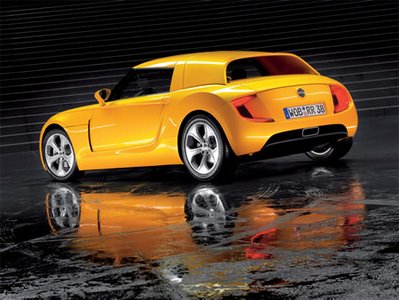
Thanks to its carbon fiber body, the middle motor sports car weighs a mere 850 kilograms and accelerates in only 6.3 seconds to 100 km/h. This sports car is powered by a 100 kW turbo diesel of the next generation and stands for a trend setting synthesis of rock-solid economy and an abundance of sportiness. 230 km/h, 6.3 seconds, 3.4 liter – a data combination that is as rare as it is fascinating.

The body design with its new sports car front configuration, LED head and rear lights-system, solid proportions and strong lines, demonstrates that even very economical cars can be a fascinating drive.
No 5. Saab Aero X

The Saab Aero X concept harnesses the power of Saab's aviation and Scandinavian roots to make a unique statement in performance car design. Conceived as a study to explore future design directions, its innovative features preview the development of an enhanced design language that will inspire future Saab products.
As one would expect from Saab, this dynamic two-seater sports coupe breaks with automotive design convention both outside and inside.First, there are no doors...or windshield pillars. That's because the Saab Aero X adopts a cockpit canopy, just as you would see on a jet aircraft. It offers the Aero X pilot full 180 degree vision, and also facilitates entry and exit from its low-slung cabin.

Thrust for the all-wheel-drive Saab Aero X also comes from a powerplant with a difference. The 400-hp, twin-turbo, BioPower V6 engine is fueled entirely by ethanol, a sustainable energy source that is kinder to the environment by cutting fossil CO2 emissions. The 'green power' of this advanced engine gives new meaning to the phrase 'performance with responsibility.'
Inside, the Saab Aero X's cockpit also adds a new dimension to clean Scandinavian interior design by completely eliminating conventional dials and buttons. Instead, Saab has applied techniques derived from Swedish glass and precision instrument making, displaying data on glass-like acrylic 'clear zones' in graphic 3-D images.
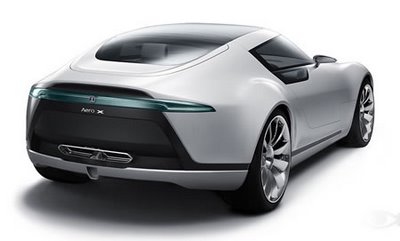
ll exterior and interior lighting is by LED (light-emitting diode), which has given the design team new freedom to exploit the compact packaging benefits of a technology that will be featured increasingly in future Saab products.With weight-saving carbon fiber bodywork, a lightweight powertrain, electronically controlled suspension and all-wheel drive, the Saab Aero X is an exciting driver's car that promises a level of performance to match its looks. Computer simulations anticipate zero to 60mph/100 kph in just 4.9 seconds and a top speed of 155 mph/250 kph (limited).
No 4. Nissan Pivo
Pivo features an innovative cabin that revolves 360 degrees, eliminating the need to reverse. Thanks to its compact body, the car is also exceptionally easy to maneuver.
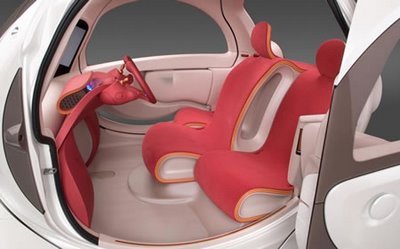
The three-seater car comes with a number of user-friendly technologies, including Nissan's Around View Monitor which reduces blind spots by displaying the outside surroundings on screens mounted on the inside of the car's A-pillars located on either side of the windshield.
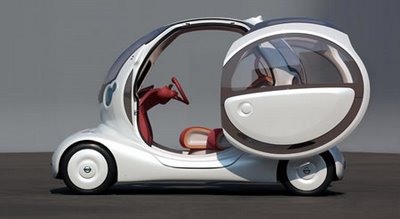
A dash-mounted infrared (IR) commander allows the driver to operate the navigation and stereo systems with simple finger movements without letting go of the steering wheel.

Pivo is powered by Nissan's compact, high-performance lithium-ion battery and its unique Super Motor, resulting in zero emissions.
No 3. Chevrolet Camaro 2006

The Camaro Concept embodies the performance and passion that have made first-generation Camaros some of the most sought-after collector cars, updating the formula with a fuel-efficient powertrain, sophisticated chassis and contemporary design execution. The goal is to make the sport coupe relevant to younger enthusiasts while retaining its appeal to its current fans.

Because of Camaro's powerful heritage, the GM Design team chose a theme that pays homage to the original Camaro, while being instantly recognizable as an all-new car.

The Camaro Concept features the latest generation of GM's legendary small-block V-8. The 6.0-liter LS2 engine features an aluminum block and heads for light weight, and Active Fuel Management™, which shuts off four cylinders to save fuel when the engine is lightly loaded. This concept version of the LS2 is rated at 400 horsepower, yet it could also deliver more than 30 mpg at highway speeds.
No 2. Chrysler Imperial Concept 2006
Like the great Imperials of Chrysler's storied past, the 2006 Imperial concept vehicle is designed as Chrysler's flagship, a luxury sedan that is elegant, provocative, aspirational, yet attainable.
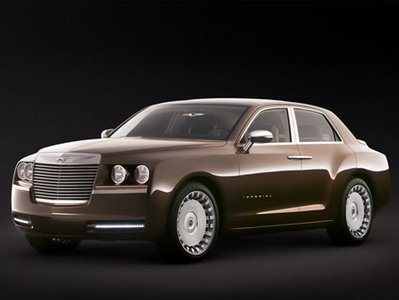
For inspiration, the designers looked not only to the classic Imperials of the 1930s and 1950s but also to Chrysler's long tradition of creative concept cars, from the earlier Chrysler d'Elegance and Falcon to the more recent Chrysler Chronos and Firepower. This rich heritage is expressed in the crisp line that parallels the sill, then arches up over the rear wheel and flows to the rear of the car, signaling that this is a powerful rear-drive automobile.

A similarly-shaped line rises up over the front wheel and flows rearward, falling slightly as in moves into the doors. To fully realize the subtleties of the chaste body surfaces, every area was lovingly hand-sculpted in the hallowed tradition of the custom coachbuilt LeBaron bodies of the classic era.
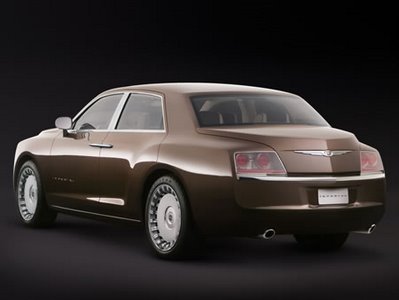
To realize the proportions the designers sought, the Imperial, mounted on a 123-inch wheelbase, is 17 inches longer and six inches higher than a 300 sedan. The roof was pulled rearward to enlarge the cabin as well as to create the luxury of length in side view. Most importantly, passengers sit nearly seven inches higher. Combined with the higher hood and deck and the large 22-inch aluminum wheels, this gives the Imperial the noble stance the designers envisioned.
No 1. Maybach Exelero
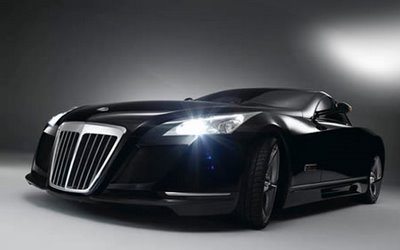
The 700-hp two-seater with a V-12 biturbo engine is a unique custom model produced for Fulda Reifenwerke, which is using the Maybach Exelero as a reference vehicle for a newly developed generation of wide tyres.
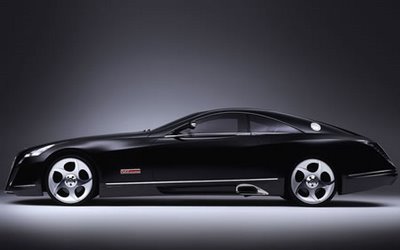
The 700-hp two-seater with a V-12 biturbo engine is a unique custom model produced for Fulda Reifenwerke, which is using the Maybach Exelero as a reference vehicle for a newly developed generation of wide tyres.

The German manufacturer of luxury cars built the unique model as a modern interpretation of its legendary streamlined sports car from the 1930s, thereby forging a link with the historical predecessor, which at that time was likewise based on a powerful Maybach automobile (SW 38) and used by Fulda for tyre tests.
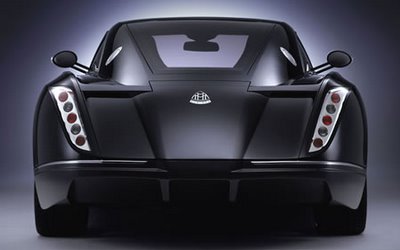
The Exelero embodies the highest expression to date of the Maybach individualization strategy of offering specific custom solutions on request. In initial tests on the high-speed track in Nardo (Italy), the unique vehicle reached a top speed of 351.45 km/h

Go To Funny-town's Main Page
7 comments:
Most excellent, though you are missing some classics.. Porsche Panamericana, Bertone Zabrus, and the Sledgehammer corvette, to name a few
The Camaro concept car was designed by Aussies.
HELL YEAH!
I dont argee with your taste in cars, I would let it go it you where a little off but that golf cart looking thing is a bad deisign and a few others are just dirivitive of other companies or things from their own past. What is the fun in that.
Batman
Some awesome cars there, barring that ugly Nissan.
<3 the Maybach!
The Mercedes Benz Bionic is a one of a kind. It has a distinctive design (based on aquatic fix TopBox). Well I wonder if MB has incorporated it with the usual parts like Mercedes brake hose or are there new parts that had been used? It is said that its a fuel-efficient, I wonder how its performance? Well we still have to wait until these concept becomes a reality. Anyways the NYIAS have several concept cars to shows. I'm sure all enthusiast would love to have a peek.
Post a Comment